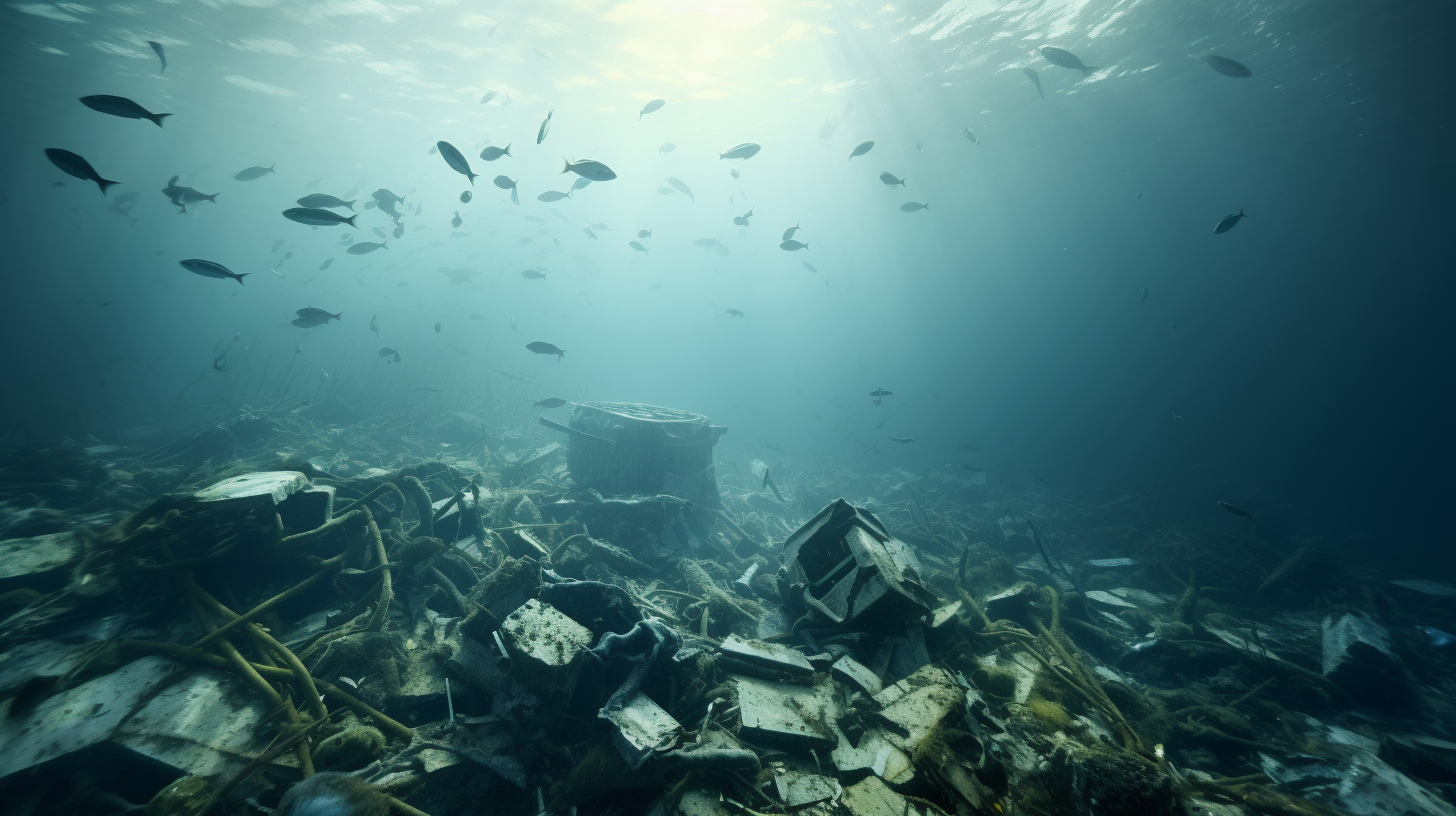In Beneath the Plastic Seas – Underwater Worlds Ensnared by Pollution, we delve into the eerie silence of our ocean’s graveyard. Once teeming with eclectic life and color, the marine ecosystem now lies shackled beneath a surface of synthetic decay. Imagine vast plains of sand, once home to burrowing creatures and undulating seagrass, concealed beneath a sprawling quilt of plastic refuse, and you will have but a glimpse of this modern Charon’s ferry.
Our oceans, a mirror reflecting the brunt of humankind’s caprice, choke on the plastic we’ve birthed. No corner is spared, from the resplendent shores of the Maldives, sheathed in polyethylene tatters, to the Mariana Trench’s abyssal plains, where even at such profound depths, our legacy of waste endures. Microplastics, those nefarious offspring of our consumption, have embedded themselves within the very flesh of marine fauna. Terrestrial travelers, they ventured far, bringing news of our folly to these reluctant hosts.
The impact is numbing, and the images are abominable. Creatures great and small enmeshed in nylon nooses, turtle shells deformed by six-pack rings, and whales, those gentle behemoths of the deep, starved with bellies full of indigestible synthetics. Through the toxic looking glass, we see a tableau of chaos inflicted by the hubris of progress.
To truly comprehend this catastrophe, we must journey beyond the surface ripples. Deeper down, we witness coral reefs suffocating under a blanket of plastic, a perverse inversion of snowfall. These vibrant ecosystems, once the rainforests of the sea, now shiver as their polychromatic vitality fades to monochrome. Within this macabre shadow puppetry, biodiversity ricochets off a precipice, an eerie echo of past mass extinctions.
The symbiosis between sealife and plastic is a grotesque parody of natural cooperation. In an orchestra with no conductor, we find eerie new realms: jellyfish ensnared in polypropylene gowns pirouette through the brine, and barnacles, those stalwart voyagers, claim polystyrene buoys as their nomadic steeds. Here, life persists, twisted and morphed – a dystopian adaptation to humanity’s insidious footprint.
But is there a glimpse of resilience amidst the repugnance? Sparse as it may be, nature’s resolve is witnessed in the most unexpected realms. Bacteria evolve, feasting on our polymeric castoffs, tentatively suggesting a glimmer of redemption from Mother Nature’s crucible. Yet, these are mere whispers of hope quickly swamped by the cacophonous reality of ongoing devastation.
To face this plight, voices have risen from the scientific cloisters, issuing bleak predictions and dire warnings. They speak of points of no return, cascading failures through food chains, and the transformation of our Blue Planet into an alien landscape — a ghoulish paradise lost. As if taking cue from Brine Pools of Despair and the Cryptic Fathoms articles, we stumble over the threshold of reality into a nightmarish realm where poetry meets the absurd.
Yet, to what end do we unveil these dolorous scenes? Is it to perpetuate despair? To satiate a voyeuristic glimpse into the maelstrom of decay? Perhaps it is a lantern held up in the tempest, warning passersby of the rocky shoals. Beneath the Plastic Seas serves not as a harbinger of doom, but as a macabre tapestry illustrating the urgency with which we must confront our existential dilemma.
In chronicling these depths, we are reminded of the futility to cleanse what has been sullied to its core. In the twilight of the Anthropocene, the oceans hold a fractured mirror to our own dissolution, a soliloquy of plastic and brine that whispers of humanity’s perilous inertia.
The question looms like a specter: As we gaze into the abyss, does it gaze back into us? With each castoff bottle and bag, we pen a new verse in this requiem for a drowning world, our legacies sealed beneath the plastic seas.
